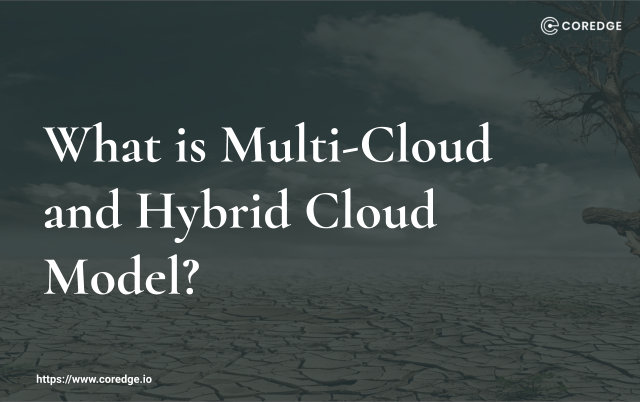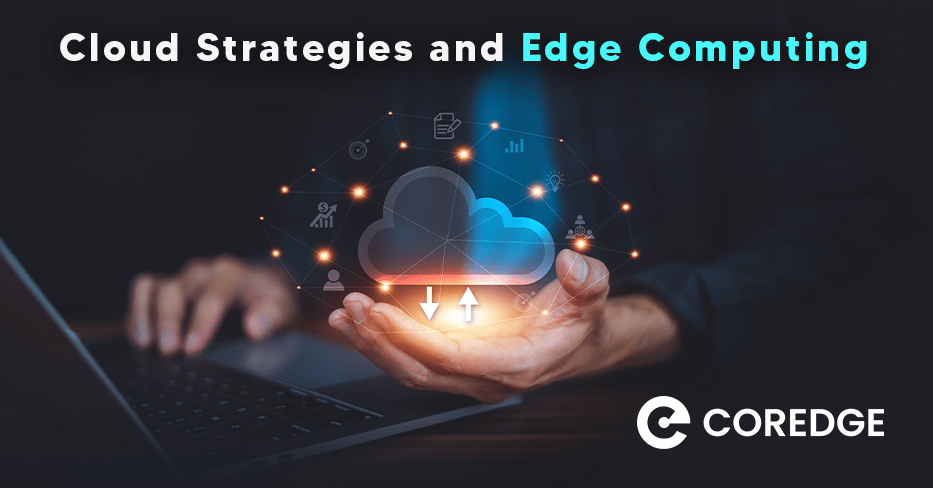Hybrid Cloud vs. Multi-Cloud: Everything You Need to Know
Coredge Marketing
November 25, 2021

Today, companies are adopting a cloud computing environment to run setups and store data. But, which cloud strategy or cloud model should a company adopt? How a company can differentiate between private, public, hybrid, or multi-cloud for deploying workloads?
The blog covers about multi-cloud model and hybrid cloud model concept. Depending on the requirement, the company can choose either model.
Dive deep into the multi-cloud model and hybrid cloud here-
Multi-Cloud Model:
The multi-cloud model is more or less for cloud-native applications that are developed from microservices and containers from various cloud service providers. In the multi-cloud model, you can essentially use two or more public clouds for deploying workloads.
You should choose multiple clouds for vendor lock-in. This helps to avoid becoming locked with a specific cloud provider’s infrastructure, pricing model, and other related services. As cloud apps that are based on microservices and containers are designed to be portable between different clouds and thus, no exploitation to cloud provider’s potential.
There are 2 major reasons why companies are using the multi-cloud model:
1) Split Workload Across Multiple Clouds: If you want to split the workload across multiple clouds, use cases are available to interact with existing workloads.
2) Replicate Same Workload Across Multiple Clouds: If you want to replicate the same workload across multiple clouds, use cases are available to replicate workload and thus, reducing latency. Besides, redundancy is good for high availability.
To get the benefits of a multi-cloud environment, you should choose the best features of each cloud provider. Let’s for say, choose Microsoft for Microsoft products, choose Google for big data analytics, and choose AWS for web apps. These are different vendor clouds that are known for managing various types of workloads. These are often based on a random choice of services that are not homogeneous or portable across several environments. However, some companies might increase complexity and be unable to gain many benefits from an exact multi-cloud deployment.
Hybrid Cloud Model:
In a hybrid cloud model, the companies use both private and public clouds to create a unified, well-managed, and automated computing environment. When it comes to performing activities in a hybrid cloud, the private cloud is used to perform critical activities and the public cloud is used to perform non-critical activities.
Before the cloud, companies need to buy their own servers, routers, switches, and own physical structure. This means that there should be someone to manage physical infrastructure and it requires plenty of money in maintenance. After cloud, companies can rent servers online and use someone else’s infrastructure for storage and data management. Microsoft Azure, Google, Amazon Web Services, NetApp, and Cisco are big cloud service providers. These cloud service providers have different use cases like mobile apps, web applications, machine learning, artificial intelligence.
Benefits of Having a Hybrid Cloud Model:
- If you are a start-up and want to look for a virtual space where you can store data and set up infrastructure easily, a hybrid cloud is the best option.
- It is super-efficient. In any situation, if routers or switches fail to work, the cloud service provider can easily take care of the underlying infrastructure.
- You are allowed to add or remove servers as per your need. It is highly scalable and flexible.
- You are not asked to buy any physical servers, you are allowed to spin up servers in a single click and scale down in a single click. This is based on Pay-As-You-Go Model.
As the Hybrid cloud model provides the top features of both private cloud as well as public cloud, it can adapt to the demands of the company related to memory, space, and system.
You might be thinking it is a very cost-effective way to rent servers on the cloud and be beneficial. But, it is not so. Some companies still use on-premise infrastructure to control costs, they don’t want to depend on other companies for their storage, and so forth. Another reason can be what will you do if the cloud provider goes bankrupt? How will you get the services for which you have paid a handsome amount? Other major reasons include compliance and security. In some countries, there are compliance rules and security practices that you need to conform to maintain data privacy.
The best thing is that cloud has premises to run workloads and manage data effectively. Just use the cloud premises as you need.
Talk to us if you have any concerns, our team at Coredge.io will be happy to help!
You can write your query to us at talktous@coredge.io





